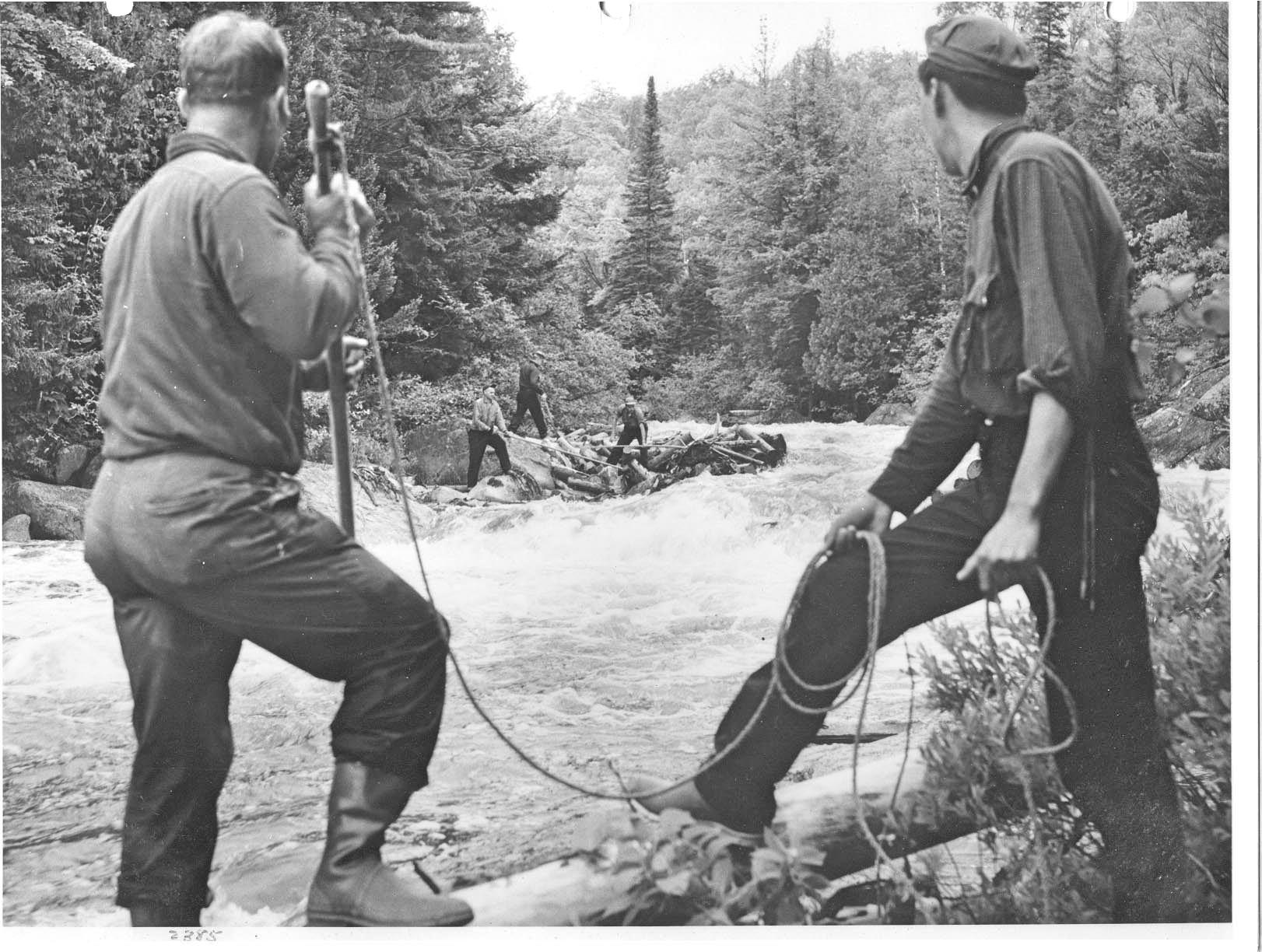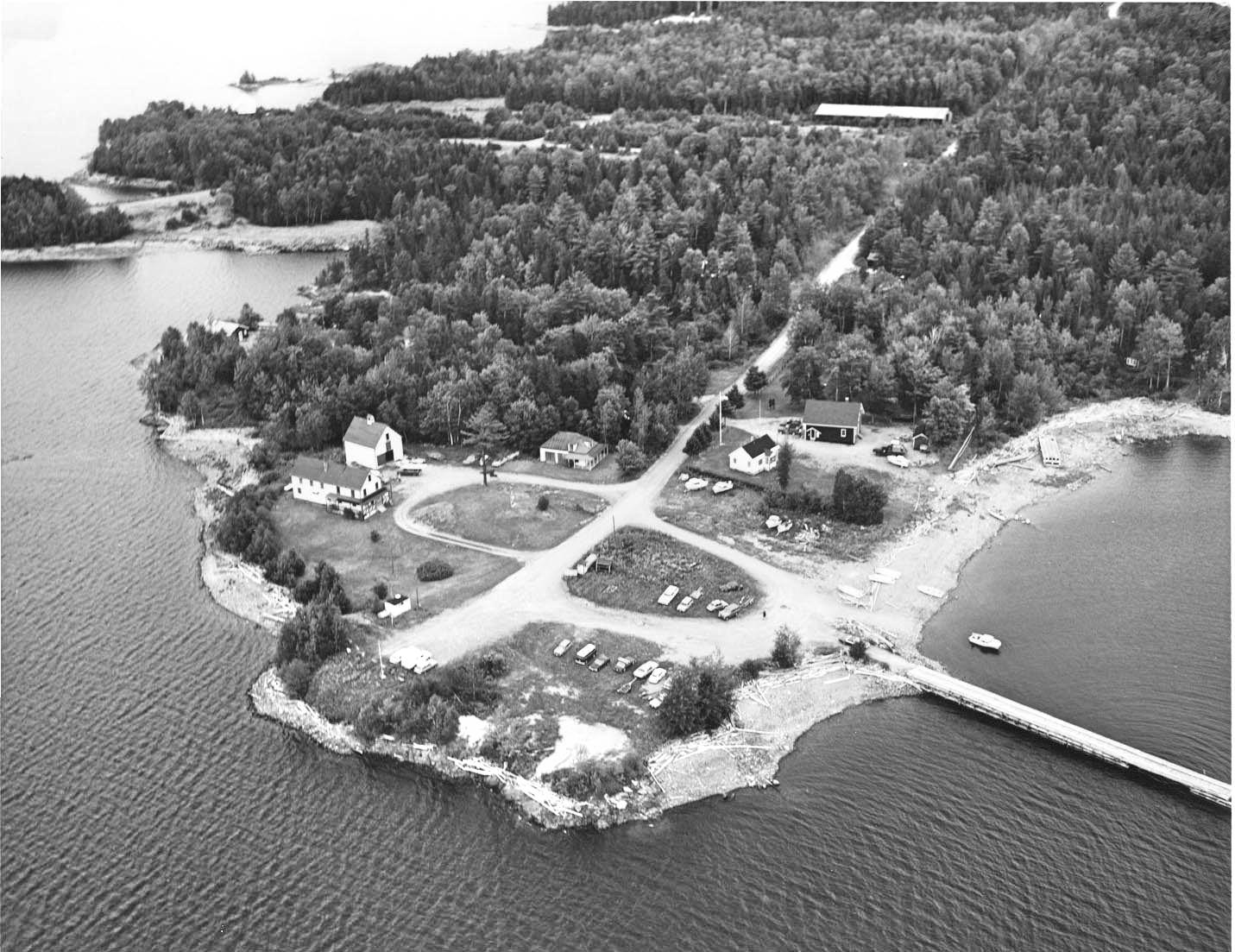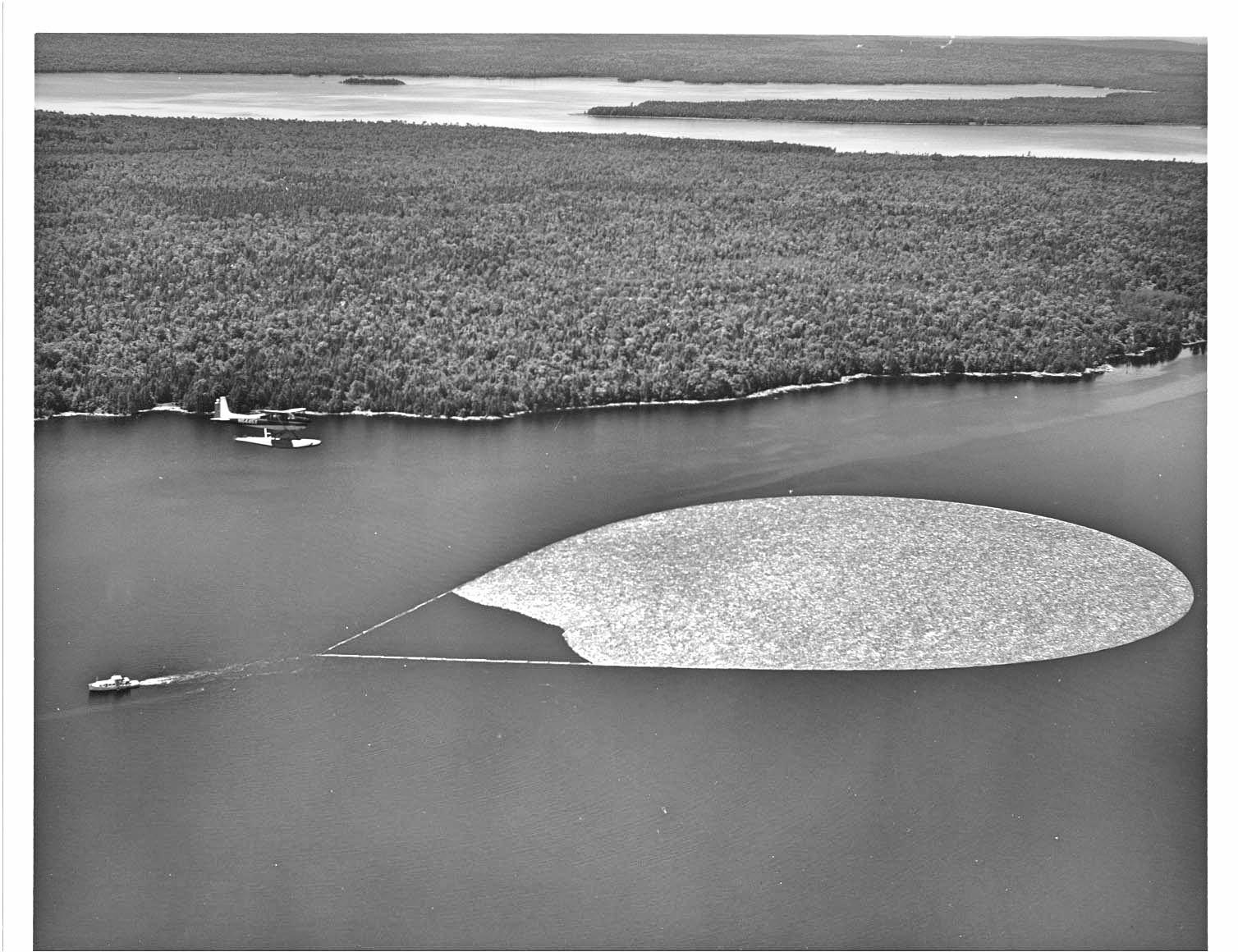
The Penobscot River is 109 miles long, measured from the confluence of the East and West Branches at Medway to where it flows into the Atlantic Ocean at Penobscot Bay. When we include the River’s branches, the Penobscot's overall length increases to over 264 miles with a drainage basin over 8,600 square miles.
The River was an early trade corridor to interior Maine from the Atlantic coast. Ocean ships could navigate from the Atlantic upstream to Bangor. The river upstream of Bangor became an important transportation corridor for log driving to bring wooden logs and pulpwood from interior forests to the saw mills that sprang up along its shores.
The first log drives came to Maine in the 1800’s when loggers would harvest in the winter, stockpile, and then dump the logs in the river in the summer to float them downstream to the mills.


According to “The Penobscot Boom”, written in 1931, river driving on the Penobscot River can be divided into three periods.
- Independent efforts, 1828 - 1846: independent logging companies were each responsible for driving their own logs down the West Branch
- Cooperative efforts, 1846 - 1903: The Penobscot Log Driving Company was formed as a collaboration of the independent logging companies to improve efficiency. At “Boom” locations the logs were rolled and sorted by company mark, connected into “rafts” and delivered to the owners.
- Corporate control, 1903 forward: the Penobscot Log Driving Company relinquished its rights to control the log drives to a subsidiary of Great Northern Paper Company.

Log movement on the West Branch of the Penobscot River began with a Charter issued by the Legislature to the “West Branch Boom Company” in 1835. As logging operations moved up the river to the present locations, several buildings to house the men were built. The first of these was in a location called “Bears Point”. Records from 1865 describe this as a log structure that was already an old building at that time.



Throughout the 1800’s, Lumber was king with an estimated 300 saw mills located in the towns surrounding Bangor along the Penobscot and Kenduskeag. But by the 1900’s, Lumbering had largely been supplanted by Papermaking as the focus of the Maine logging industry. As the end consumer of the logs changed from saw mills to paper mills, the logs driven down the Penobscot also changed from long logs to 4 foot lengths.


If Northern Maine was at one time the lumber capital of the world, then Great Northern Paper Company was an important hub in this wheel. In 1898, the Great Northern Paper Company began construction of their paper mill in Millinocket. This mill was the largest of its kind in the world. In 1907, a mill in East Millinocket was completed and GNP became the largest consumer of the logs driven down the West Branch.




Over time, the River Drivers continued moving up the West Branch to supply the paper mills, and they needed to be housed.
The Ambajejus Boomhouse was built in 1906, followed by the Chesuncook Boomhouse in 1916. The River Drivers lived and worked from these Boomhouses from this time forward until 1971.
These historic buildings are now preserved as River Driver Museums.
To learn more about the Boomhouses, please follow these links:





End of an Era
From 1969 to 1972, the Golden Road was constructed for Great Northern Paper to access 2.1 million acres of working forests in the North Maine Woods.
The transportation of wood from northern Maine was no longer solely reliant on the Penobscot watershed. With the passage of the Clean Water Act of 1972, and the completion of the Golden Rd that same year, the log drives came to an end in northern Maine.


In 2013, the West Branch Historical Preservation Committee acquired the Boomhouses at Chesuncook and Ambajejus. We are preserving these Boomhouse museums as physical records of the fortitude, ingenuity and courage of the River Drivers.
The Boomhouses are open daily to the public, May 15 to September 15. Admission is free - donations are welcome.
